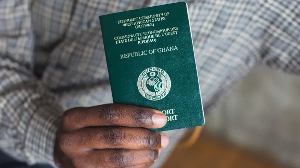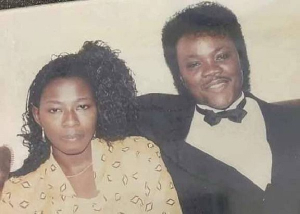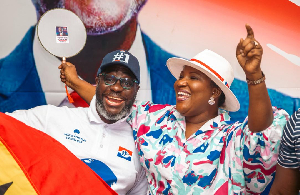Salaga (N/R), March 22, GNA- The government has between 2002 and 2003, released a total of 54.5 billion cedis from the HIPC Fund for the construction of boreholes in Northern, Brong Ahafo and Volta Regions, under a special Guinea Worm Eradication package.
Mr Robert Van-Ess, Director of Technical Services of the Community Water and Sanitation Agency (CWSA), which is implementing the project announced this on Saturday at Salaga, the East Gonja District capital and said the three regions were the most endemic in terms of guinea worm infestation in the country.
He said in 2002, the government made available 40 billion cedis from the HIPC Fund for the construction of boreholes in the three regions, as well as for poverty reduction activities in the Western Region. He said the government, under this package, provided additional 14.5 billion cedis in 2003 to support the second phase of the programme in the three regions.
He said Ghana ranks second to Sudan in guinea worm infestation globally with the Northern Region recording the highest number of cases in the country.
Mr Van-Ess who was on a field inspection of some guinea worm endemic communities in the East Gonja district to assess progress of work on the HIPC funded guinea worm eradication borehole drilling project briefed the District Chief Executive, Mr Bismark Haruna Dari about his mission. He said 135 boreholes would be drilled in six districts of the Northern Region, namely East Gonja, West Gonja, Nanumba, Gushiegu/Karaga, Yendi, Tamale.
Additionally, he said under the package, rehabilitation of 17 boreholes in Zabzugu/Tatale district and the installation of hand-pumps were ongoing while the water system at Savelugu in the Savelugu/Nanton district was being assessed for rehabilitation to bring it up to the required standard.
Mr Dari said water was a big problem in some communities in the district and suggested that the appropriate agencies in the water sector should explore other technologies apart from the drilling of boreholes, to provide water for these communities.
He appealed to the CWSA to help expand the water system at Salaga to cater for the growing number of residents.
Mr Van-Ess said under the first phase of the programme, which is ongoing, the CWSA was facilitating the drilling of 33 boreholes in 25 communities in East Gonja.
He said drilling of the 135 boreholes for the Northern region would be completed between June and July this year, while hand pumps for the boreholes were expected to arrive for distribution to the beneficiary districts by April or May.
The CWSA Director of Technical Services announced that under the second phase of the programme three communities in the East Gonja district would be provided with five more boreholes whose drilling would be completed by October, this year.
He said however that, HIPC release for 2004 was yet to be made available.
Mr Van-Ess said in all the communities where water had been provided, water and sanitation committees (WATSANs) had been formed and trained to manage the water systems to ensure their sustainability.
During an interaction with the communities at Adamupe and Bunkpa, the people commended the government for providing them with potable water and gave the assurance that once the facility is in place, they would no longer drink from any unsafe water source.
So far, four successful boreholes have been drilled in the East Gonja district.
Mr Amankwa Iddisah, a Northern Regional Guinea Worm Eradication Programme Coordinator and Mr Abdulai Salifu, the Regional Water and Sanitation Engineer, accompanied Mr Van-Ess on the field inspection.
General News of Monday, 22 March 2004
Source: GNA












